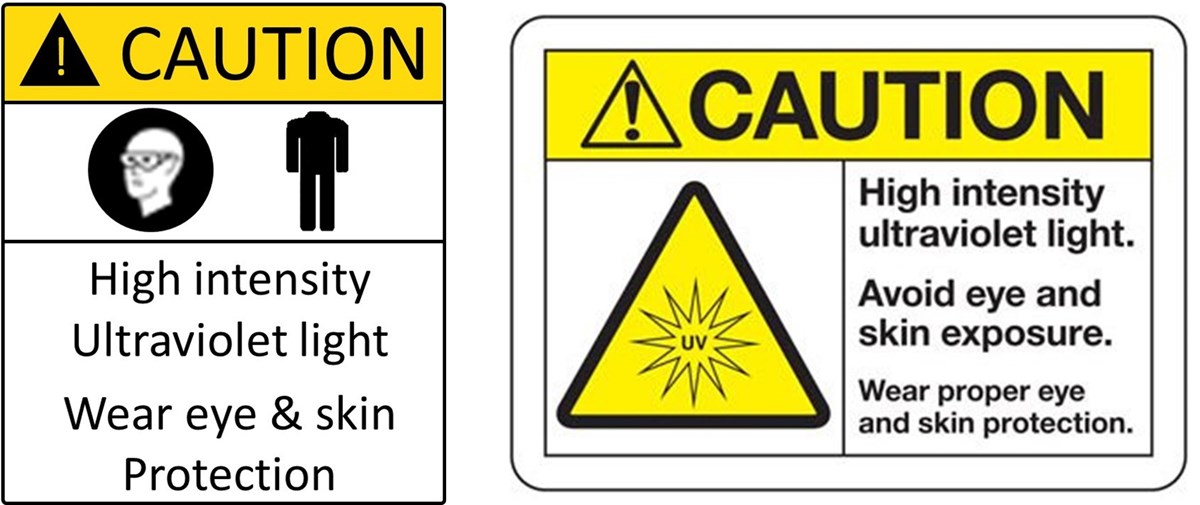URGENT: UNIVERSITY POLICY / DISCLAIMER about handheld UV sterilization devices marketed for use on COVID-19.
Ultraviolet Radiation Safety
Ultraviolet (UV) light is a form of non-ionizing radiation. It has many uses at the University of Massachusetts Lowell from sterilization to curing certain glues or plastics. The health effects of UV light are primarily skin burns and eye injuries. To ensure adequate understanding of UV safety, the University of Massachusetts Lowell has developed a UV safety training. The Radiation Safety staff function as a resource to assure the health and safety of the university community.
- Training
- EHS Lab Safety Training is required (basic lab safety training)
- PI directed awareness training determined by the PI, and typically includes manufacturer procedure review. This should include an explanation of signage and limits.
- Complete the UV Radiation Safety Training module from UMass Lowell Radiation Safety
- Controls
- Devices and equipment which produce UV light should be fully enclosed and interlocked whenever possible
- If light can not be fully enclosed a procedure written by the lab should detail operation and correct PPE to be worn whenever a hazard exists
- Personal Protective Equipment in areas where UV light can not be contained and/or enclosed
- Lab coat with long sleeves
- Nitrile gloves at a minimum.
- Eyewear / face mask designed to block UV light (ANSI Z87.1-1989 UV)
- Radiation Safety can provide support, technical advice, and will be available for emergency response. Please contact us with questions.
Posting Requirements
The following postings should be on all equipment that produces UV light.
The posting should be clearly visible on the piece of equipment or near any access point of aperture.

Machine Labeling Requirements
At a minimum, equipment must have a warning which states:
“CAUTION UV RADIATION HAZARD USE ONLY WITH SHIELDING IN PLACE PROTECT EYES AND SKIN FROM EXPOSURE TO UV LIGHT”
